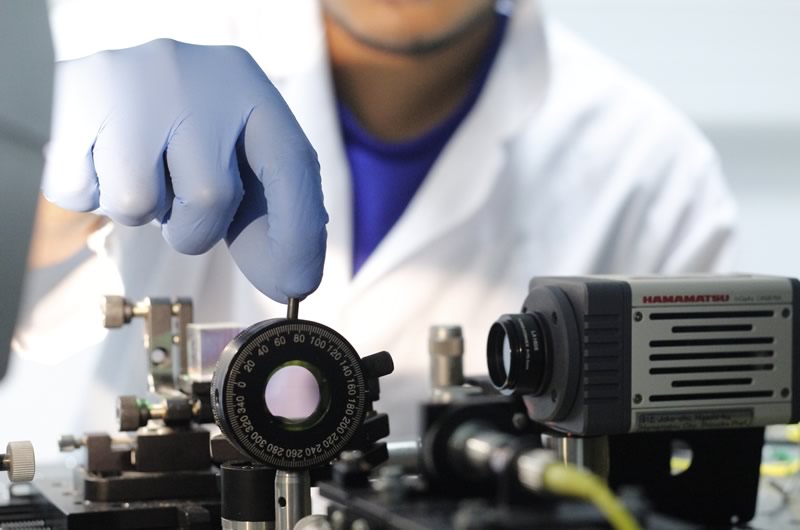We have 1 prestigious PIADS PhD position available that will commence in September 2020. Students will join a vibrant and well-established Centre for Doctoral Training (CDT) hosted by IPIC (the Irish Photonics Integration Centre) in the Republic of Ireland (ROI), and in partnership with Queens University Belfast and the University of Glasgow. Graduating PIADS doctoral students are equipped with the high level scientific and engineering research skills needed to address the challenges of developing new integrated photonic technologies for diverse applications as well as with the entrepreneurial, leadership and teamwork capabilities needed to lead and operate at the highest levels in industry. The programme is a gateway to a vast array of career paths from data storage, semiconductors, telecommunications, biophotonics and medical technologies and more. CDT students can progress into a range of research and development, technical and management roles in industry or academia.
The ROI student will be based with the IPIC academic partners; Tyndall National Institute & Cork Institute of Technology(CIT), and will have access to an advanced structured training programme, to world class facilities and academic expertise that spans the partners above and University of Glasgow and Queen’s University in Belfast. This includes a bespoke week long induction programme with students from all three partners, an annual Winter School and access to advanced training courses in areas such as semiconductor fabrication, packaging, biophotonics and entrepreneurship. In addition, IPIC and PIADS have many industry partners that will open up research and career opportunities.
Description:
Integrated single frequency sources in the blue wavelength range are vital to applications ranging from time and frequency standards, underwater communications to medical diagnostics. In particular, lasers at the wavelengths 369nm, 422nm and 461nm are important for compact atomic clocks, in which a narrow linewidth blue laser source is used to target the atomic cooling transition. To provide the spectral pure light sources, sidewall grating Distributed Feedback (DFB) GaN lasers have recently been developed by Prof Kelly’s group at the University of Glasgow in collaboration with Thomas Slight at CSTG (https://www.cstglobal.uk/), a laser manufacturer based in Scotland1.
To frequency stabilize these lasers and provide further linewidth narrowing, two related techniques will be investigated: the Pound-Drever-Hall method in which a control measures the light reflected from a reference integrated high Q-factor silicon nitride Fabry-Perot cavity recently realized by Dr O’Faolain2 and adjusts the laser drive current; and self locking in which resonant light is coupled from the SiN FP cavity back into the laser. With appropriate conditions on the photon lifetime of the laser cavity, optical feedback locking will occur, forcing the laser to match the resonance wavelength of the etalon, even in the presence of outside perturbations. Further work will enhance the toolkit of on chip components available and using hybrid or heterogeneous integration to produce fully integrated stabilized lasers as implement evanescent mode waveguides to enable optical sensors.
This project brings together the Silicon Nitride photonic integration design and fabrication capabilities of CIT and the Tyndall National Institute with the III-V lateral grating DFB technology of the University of Glasgow and CSTG. Etalons will be developed in Silicon Nitride suitable for use at these wavelengths, and the above linewidth reduction techniques will be examined for the control of the GaN DFB lasers.
The project is closely linked to the Heterogeneous and Hybrid Integration themes whose integration approaches will help realise the system. The high performance spectrally pure lasers realised in this project will open up a new application area for IPIC and will also be of use to the Biophotonics theme.
[1] Slight, T. J.; Odedina, O.; Meredith, W.; Docherty, K. E. & Kelly, A. E., “InGaN/GaN Distributed Feedback Laser Diodes With Deeply Etched Sidewall Gratings,” IEEE Photonics Technology Letters 28 , 2886-2888 (2016)
2 Panettieri, D.; O’Faolain, L. & Grande, M., “Control of Q-factor in nanobeam cavities on substrate,” 18th International Conference on Transparent Optical Networks (2016)
Supervisors: Dr. Liam O’Faolain (William Whelan-Curtin)- CIT/Tyndall National Institute, Prof. Anthony Kelly – University of Glasgow
Collaborator: Thomas Slight CST Global
See www.ipic.ie/piads/ for further information.
For enquiries contact [email protected]
An annual student stipend of €18,500 applies for this successful candidate for this position. Yearly University academic fees and bursary for training will paid by the Tyndall National Institute.
Application instructions and further details can be found here.



